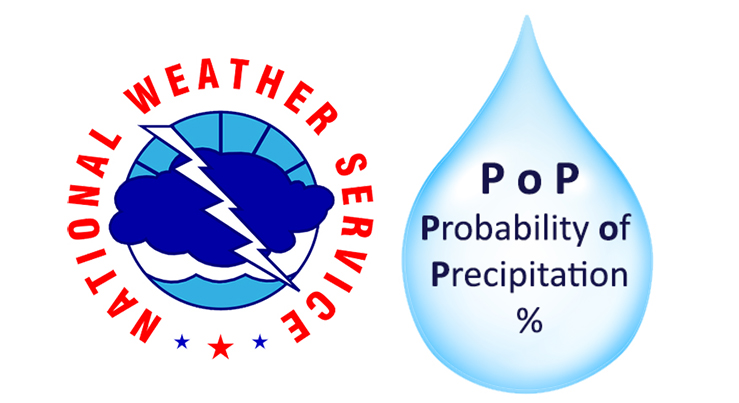Most of us understand the meaning of a high and low temperature forecast. More confusing is the meaning of a “chance of rain” expressed as a percentage in a weather forecast.
The National Weather Service calculates a probability of precipitation, or PoP. The PoP describes how likely it is for a measurable amount of rain (at least 0.01 inches) to occur in a given time in the forecast area.
The PoP is calculated by multiplying two factors — the forecast’s certainty that rain will fall in the area and how widespread it is expected to be. As an example, if the NWS issues a forecast that is 100% sure that rain will occur but that it will only cover 60% of the forecast area, the forecast is for a 60% chance of rain (PoP = 1 x 0.6 x 100%).
Several studies have demonstrated that expressing the precipitation forecast as a single-event probability leads to confusion. Another way to think of a forecast of 40% chance of rain tomorrow: If there are 10 days in which the atmospheric conditions were exactly like today, in four out of those 10 cases there will be at least a minimum amount of rain the next day.
Predicting weather is an age-old problem, and an important one to our lives. Many of us have smartphones and use weather apps to help plan our outdoor activities. These apps include chances of precipitation, and we may devise personal ways to interpret this prediction based on our experience, thinking of it as the likelihood of precipitation occurring. We probably interpret a PoP of less than 20% as good for outdoor activity while a PoP of more than 70% probably suggests planning for rain.
Steve Ackerman and Jonathan Martin, professors in the UW-Madison department of atmospheric and oceanic sciences, are guests on WHA radio (970 AM) at 11:45 a.m. the last Monday of each month. Send them your questions at stevea@ssec.wisc.edu or jemarti1@wisc.edu.


